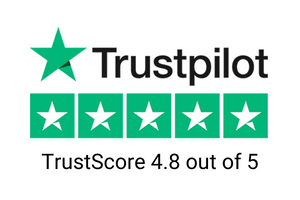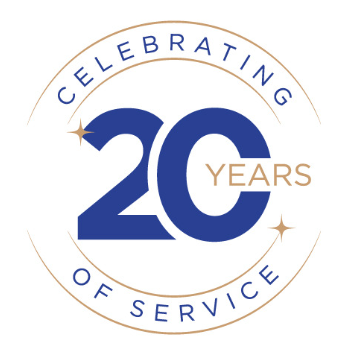Last Updated: January 03, 2024
Safely Closing Your Unused Card Account

Disclaimer: We are not qualified legal or tax professionals and are not giving advice. Always speak with a qualified professional before making any legal or financial decisions.
If you are finished with a credit card, you just cut it up and throw it away, right? Not exactly. First, you need to determine if you really want to cancel the card. There can be a negative effect on your credit score if you are not careful. Let’s take a look at the pros and cons of canceling a credit card and then the correct way to go about it so your credit score is not affected.
Why Cancel a Credit Card?
There are three main reason s that closing a credit card might be the best choice for your finances: divorce or separation, high annual fees, and temptation.
If your marital status is changing, you should absolutely close any joint credit cards. If your spouse continues to use the card, you are still liable for any past or future charges on the card. You don’t want to risk your credit rating! Be aware that no matter what the divorce decree says, credit card companies still hold you liable for paying off the joint card because you were a co-signer on that card.
If your card comes with a high annual fee and you do not use the card, closing it is definitely worth pursuing. The only time you may not want to cancel the high annual fee card is if you have benefits build up on the card that you plan to use in the near future. You can try calling the card issuer and ask for the annual fee to be waived.
The final reason is if you are overusing your credit cards. Of course, you can take the cards out of your wallet and remove them from saved websites. This way it won’t affect your credit score as much.
Why Keep an Account Open?
The biggest reason to NOT cancel a card is that it will affect your credit utilization ratio. This ratio looks at how much debt you have compared to how much revolving credit you have. Your goal is to have your credit utilization as low as possible with most experts recommending a credit utilization ratio of 30% or less. Let’s look at some examples below.
Example 1
Credit card 1: $5,000 in revolving credit, $1,000 in debt (credit used).
CUR: 0.2 or 20% (1,000/5,000)
This means that you are using 20% of your available credit.
Example 2
Credit card 1: $5,000 in revolving credit, $1,000 in debt (credit used).
Credit card 2: $10,000 in revolving credit, $8,000 in debt
CUR: 0.6 or 60% (9000/15,000)
In this example, you are using 60% of your credit.
Example 3
Credit card 1: $5,000 in revolving credit, $0 in debt (credit used).
Credit card 2: $10,000 in revolving credit, $8,000 in debt
CUR: 0.53 or 53% (4,000/15,000)
Let’s say you paid off credit card 1 and are wondering whether or not to close it. If you hold onto it, you are now using 50% of your CUR. If you close credit card 1, your CUR becomes 80% and your credit score will most likely take a negative hit.
In this example, closing your credit card doesn’t really make any sense (provided you are not getting a divorce or it is a high fee card).
Keep in mind that not using a credit card can prompt a credit card company to close your account for you.
Closing a Card the Right Way
You have decided to close a card. What steps should you take to make certain that the closure does not affect your credit score too much?
Step One: Pay Off The Balance
Before closing the card, pay off the balance. Even if you close it, some cards will still accrue fees. You can either pay it off in full or transfer the balance to a more advantageous card. Using a balance transfer can be a great way to get rid of high-interest fees and account fees. Just make sure you always read the fine print!
While you are paying off the balance, transfer subscriptions, and automatic payments to a different card. Before closing your account, log in to all websites and apps that have automated or recurring payments set up on the card. Subscription services, utility bills, insurance policies could be at risk of unexpected interruption or fees if they attempt to process payments on a closed card. Add the new card details or update your payment method preference to avoid any issues.
Step Two: Redeem Rewards
If you have any rewards with your card, these are voided when you cancel the card. You may be able to transfer rewards to family members (airline or hotel stays), depending on the fine print.
Step Three: Call the Issuer
Now that your balance is paid off or transferred, you need to talk with the credit card issuer. There is a phone number on the back of your card that will connect you with a representative. Ask if there is any outstanding balance on the card. Occasionally, there will be a bit of accrued interest. You can pay that off if there is a small balance.
Next, tell them you want to cancel the card. The representative may make a retention offer. If you still want to cancel the card, request that it be canceled and noted that the card was closed at your request. Closing the card at your request looks better than closed by default on your credit report.
Write down the following information and keep it in a safe place:
- The date and time you requested the cancellation
- The representative’s name
- Mailing address for a cancellation letter.
Step Four: Send a Cancellation Letter
- Your address
- Your phone number
- Date
- Credit Card Issuer
- Their Address
- To Whom It May Concern:
On (date) and (time), I spoke with (name of representative) about closing my account (number). This letter is to confirm that I want to close this account at the consumer’s request.
Please mail me documentation that I have a $0 balance and that my account is now closed with the notation that it was closed at the consumer’s request.
If you have any questions, please contact me at the above address or phone number.
Sincerely
(your name signed)
(your name printed)
Keep a copy of this letter and any future letters from the credit card issuer.
For extra proof the letter was delivered, consider sending it by certified mail with return receipt requested. The returned slip provides documentation that your cancellation request was received. Save this along with copies of any other cancellation correspondence.
Step Five: Check Your Credit Report
It will take at least a month for your credit report to reflect that the card has been closed. You’ll want to look at Transunion, Experian, and Equifax. If the report does not say that the card was closed by the cardholder or consumer with a $0 balance, you will need to contact your issuer to have it corrected.
Keep copies of all correspondence letters and emails, as well as the time, date, and names of anyone you spoke with. If they resolve the matter, yay! If not, it is time to contact the credit reporting agencies and file a dispute.
Step Six: Destroy Your Card
Do NOT throw your card in the trash. Instead, cut it into many tiny pieces or shred it. If you have a metal card, return it to the issuer for destruction.
Congratulations! You have now successfully closed a credit card safely and with minimal damage to your credit score.
Reasons to Cancel a Card
In addition to the reasons already mentioned, here are some other potential benefits of canceling a credit card.
- Saves money on annual fees or other costs: If your card has a high annual fee that doesn't provide enough value to justify the cost, closing it can save you money every year. This is especially true if you don't use the card's benefits enough to offset the fee.
- Reduces clutter and organizing if you have multiple unused cards: Having a wallet stuffed with cards you never use can be frustrating. Consolidating to one primary card makes organizing simpler.
- Lowers temptation to overspend if you struggle with credit card debt: The convenience of credit cards can make it easy to spend more than you intend. If you have trouble controlling spending on a particular card, removing the temptation can be financially wise.
Keep an Account Open
- Closing old unused cards can temporarily lower your credit score but usually doesn't cause significant long-term damage, especially if you already have other open card accounts with solid payment history. As long as you have active accounts reporting on-time payments, closing your oldest card will likely only impact your credit mix and length of credit history in the short term. Within a few years, any credit score impact tends to decrease if your other credit habits remain strong.
FAQs
Conclusion
Canceling a credit card is often a personal financial decision that requires weighing the pros and cons unique to your situation. While closing an unused card can provide benefits like saving on fees, minimizing clutter, and reducing debt temptation, it can also carry risks like temporarily lowering your credit score or forfeiting valuable rewards.
If after careful evaluation you still decide to close your account, be sure to do so properly by paying balances, updating autopay, sending written confirmation, and destroying the card. Monitor your credit report and maintain good habits with your remaining cards. Over time, any negative impacts tend to decrease. And you may find that eliminating a problematic card leaves you better off overall by simplifying your finances.
With the right preparation, canceling a card does not need to be overly complicated or hazardous. By following key steps and understanding the implications to your credit, you can move on from an unnecessary card smoothly and strategically. Use the recommendations in this guide to plan your own card closure in a way that makes the most financial sense.
Pacific Debt, Inc.
If you have overused your credit cards and taken on too much debt, you may need more help than just the recommendations offered in this article. If you’d like more information on debt settlement and how it can help you reduce your debt, contact Pacific Debt.
*Disclaimer: Pacific Debt Relief explicitly states that it is not a credit repair organization, and its program does not aim to improve individuals' credit scores. The information provided here is intended solely for educational purposes, aiding consumers in making informed decisions regarding credit and debt matters. The content does not constitute legal or financial advice. Pacific Debt Relief strongly advises individuals to seek the counsel of qualified professionals before undertaking any legal or financial actions.
✔ Accredited by Better Business Bureau with BBB A+ rating (4.93 rating and 1678 reviews)
✔ US News and World Reports and Bankrate ranked Pacific Debt Relief as one of “The Best Debt Relief Companies of 2024”
✔ 6.9 star rating by BestCompany.com (over 2379 client reviews)
✔ 4.8 star rating by TrustPilot based (over 1613 verified consumer reviews)
✔ ConsumerAffairs.com Accredited (over 544 verified reviews with an average rating of 5 stars)
✔ A Top 10 Rated Compan by TopTenReviews.com , ConsumersAdvocate.com and Top10debtconsolidation.com
✔ 4.6 star rating by Google (229 client reviews)
✔ 100% rating by SuperMoney (9 client reviews)
Reduce Your Credit Card Debt By Up to Half

BBB Reviews | 4.9/5.0 Rating









 Do Not Sell My Personal Information
Do Not Sell My Personal Information